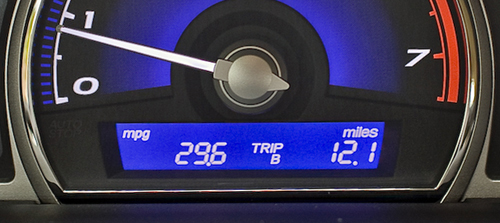
This post follows on from my post 9 ways to reduce your tax bill. Where I promised more details on the correct methods for calculating your vehicle expenses. It also follows on from the post Are you using the correct rates when claiming your vehicle expenses? Which provides the correct mileage rates for 2014.
If you use your private vehicle for business use then you are entitled to claim a portion of the running costs as a business expense.
There are 3 ways you can calculate the cost of business use of your vehicle, all of which will require some use of a vehicle log “book”. Yes I know, it’s never a fun experience completing a vehicle log “book” but there are some very clever smart phone apps available that can make it a teeny tiny bit of fun (I would highly recommend finding a way to extract this info into a pdf or some other printable document though).
Method 1 – IRD Mileage Rate
The current IRD mileage rate is $0.77/ km and this rate can be used for a maximum of 5,000 km per year. This rate is subject to change as it is updated by IRD each year.
To use this rate you would need to complete a vehicle log “book” detailing all business trips for the year, a typical log “book” entry would be something like:
10/04/14 Client Visit 85203 (odometer at start of trip) 85293 (odometer at end of trip) 90km (odometer end – odometer start)
At the end of the year you would add up the total number of km traveled for business purposes and multiply by $0.77
e.g. 3985 km x $0.77 = $3,068.45 claimable as a business expense.
Remember though, if your total business km traveled for the year comes to more than 5,000 km you can’t use this method.
Method 2 – Log Book (% of Business Use)
Where your business useage of your private vehicle is more than 5,000 km per year it is usually better to use this method.
To use the log book (% of business use) method you must keep a log “book” for a minimum of 90 consecutive days, the resulting business use % is then valid for up to 3 years (less if the variance in business use changes by more than 20%).
Your vehicle log “book” must include:
- The start and end date of the 90 day period
- The vehicle odometer readings at the start and end of the 90 day period.
- Distance for each business trip.
- Date of each business trip.
- Reason for each business trip. (Client visit, Shopping for business supplies, Checking P.O. Box etc)
- Any other details IRD may require.
I personally include all the above details for my personal trips during the 90 day period as well, although my reasons and descriptions for personal trips are merely “Personal”. I also include the start and end odometer readings for each trip.
The reason I do this is that there is nothing more frustrating than getting to the end of the 90 day period and realising you have had brain freeze while completing the log “book” on one or more occasions and the records don’t tally properly which could result in needing to complete another 90 days of log “book” entries!
By completing all entries for each business and personal trip including odometer readings any miscalculations can be fixed and cross checked against the overall odometer readings making it much more accurate.
Once you have your 90 days of log “book” entries you need to get your “adding on”
- Go through and check the difference between your end and start odometer readings for each trip match the total km you recorded for the trip.
- Go through and highlight your business trips, add each of the business trip km.
- Add each of the personal trip km (should now be the ones that aren’t highlighted).
- Add the business trip km and the personal trip km to check that this matches the difference between the original start odometer reading and the very final odometer reading.
- Divide the business trip km by the total km traveled and multiply by 100. This will be the % of vehicle expenses you can claim as a business expense.
- To cross check, divide the personal trip km by the total km traveled and multiply by 100. This should be the difference between your business % and 100%.
e.g. The total distance traveled for business purposes was 6,050 km, the total distance traveled for personal purposes was 6,950 km and the total distance traveled was 13,000 km.
Business km/ Total km * 100 = Business %
6,050/ 13,000 * 100 = 47% (You could claim 47% of all vehicle expenses as a business expense)
Personal km/ Total km * 100 = Personal %
6,950 km/ 13,000 km * 100 = 53% (53% of all vehicle expenses are not claimable)
Once you know your business % you can use that to calculate the claimable portion of each of the following vehicle expenses:
- Fuel
- Repairs & maintenance
- WOF, relicensing (registration), road user charges
- Insurance
- Depreciation (if you are not familiar with how depreciation works I would recommend contacting an accounting professional for this)
Method 3 – Actual Cost
This is another alternative to the IRD mileage rates, however it is not a method I would recommend as I feel it would be quite difficult to reliably ascertain and justify which actual costs were business and which were personal.
You can claim deductions on your actual costs including depreciation loss for the business use of your motor vehicle. If you use this method you must keep accurate records including details of private and work-related expenses. Your records will need to show the reasons for and the distances of journeys for business travel.
So, when was the last time you used your vehicle log “book”?
